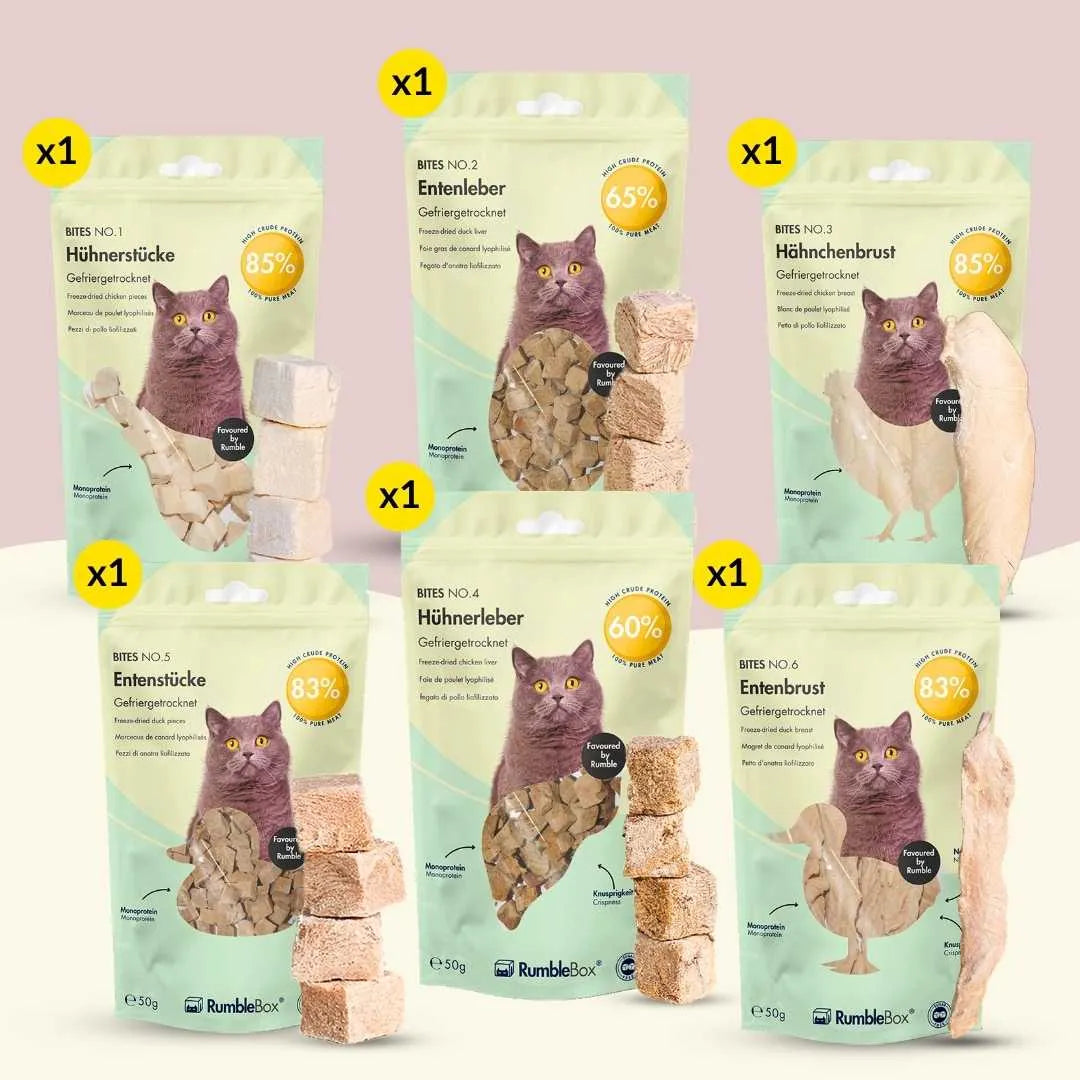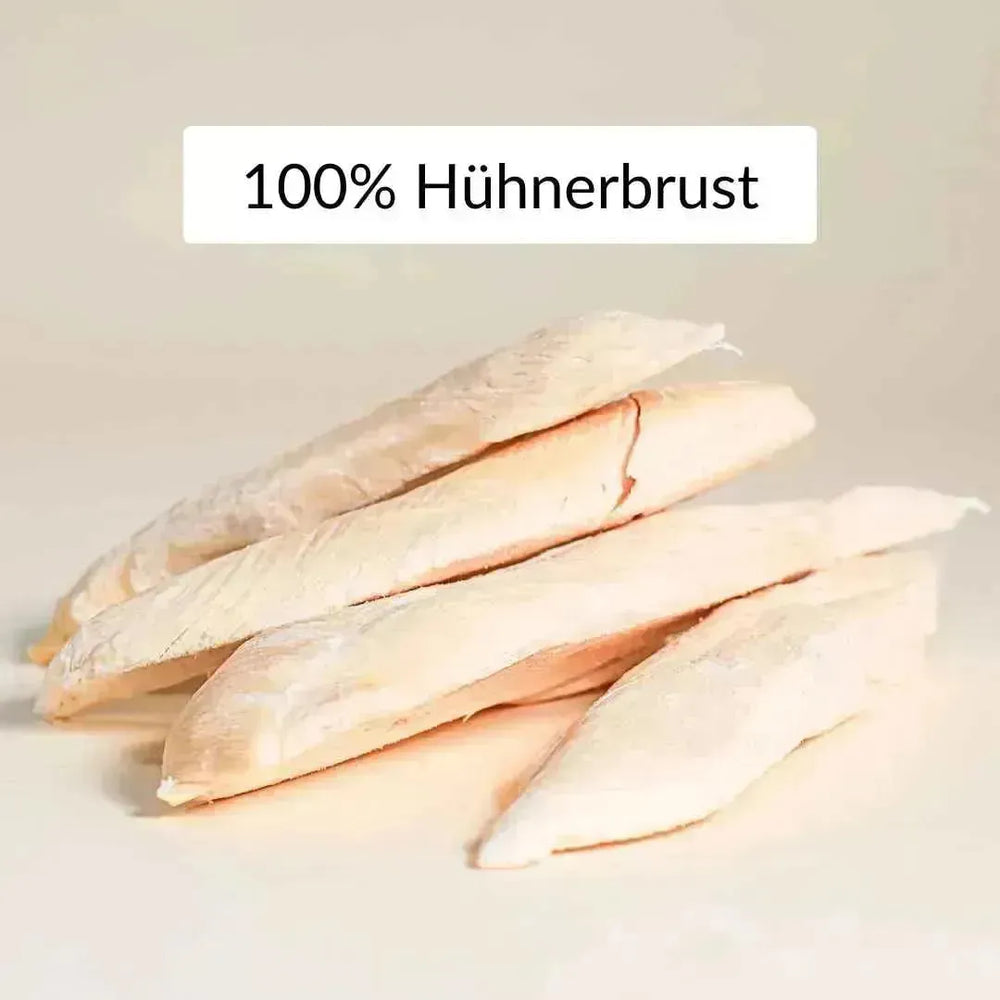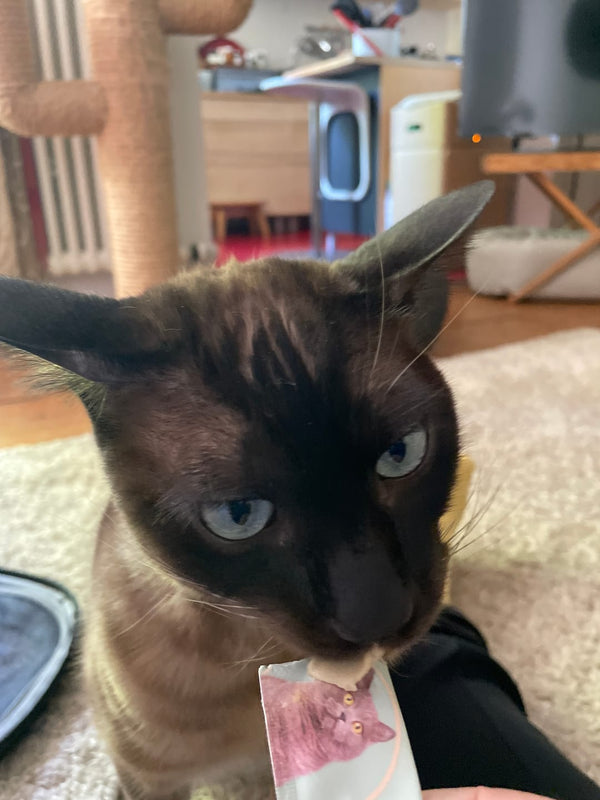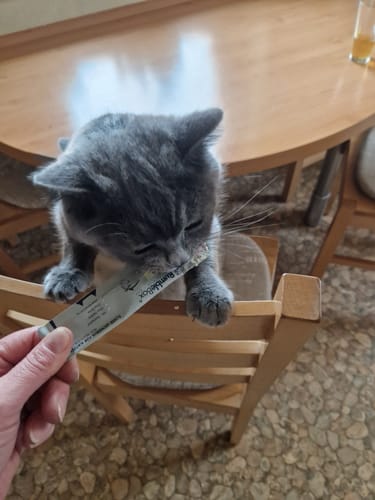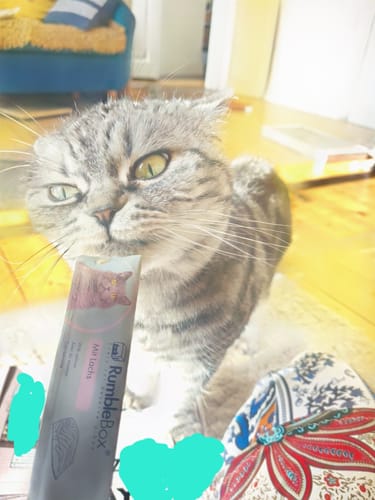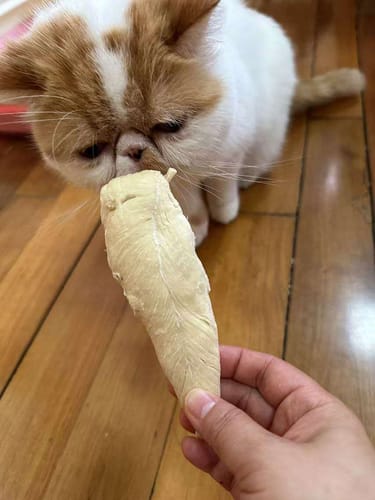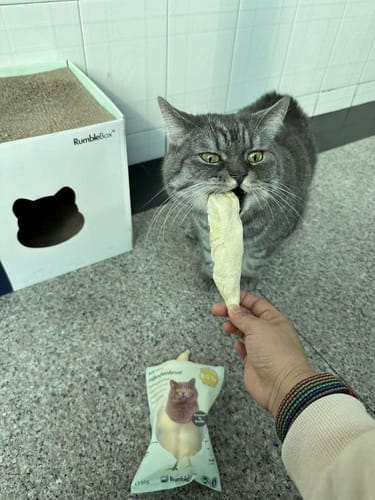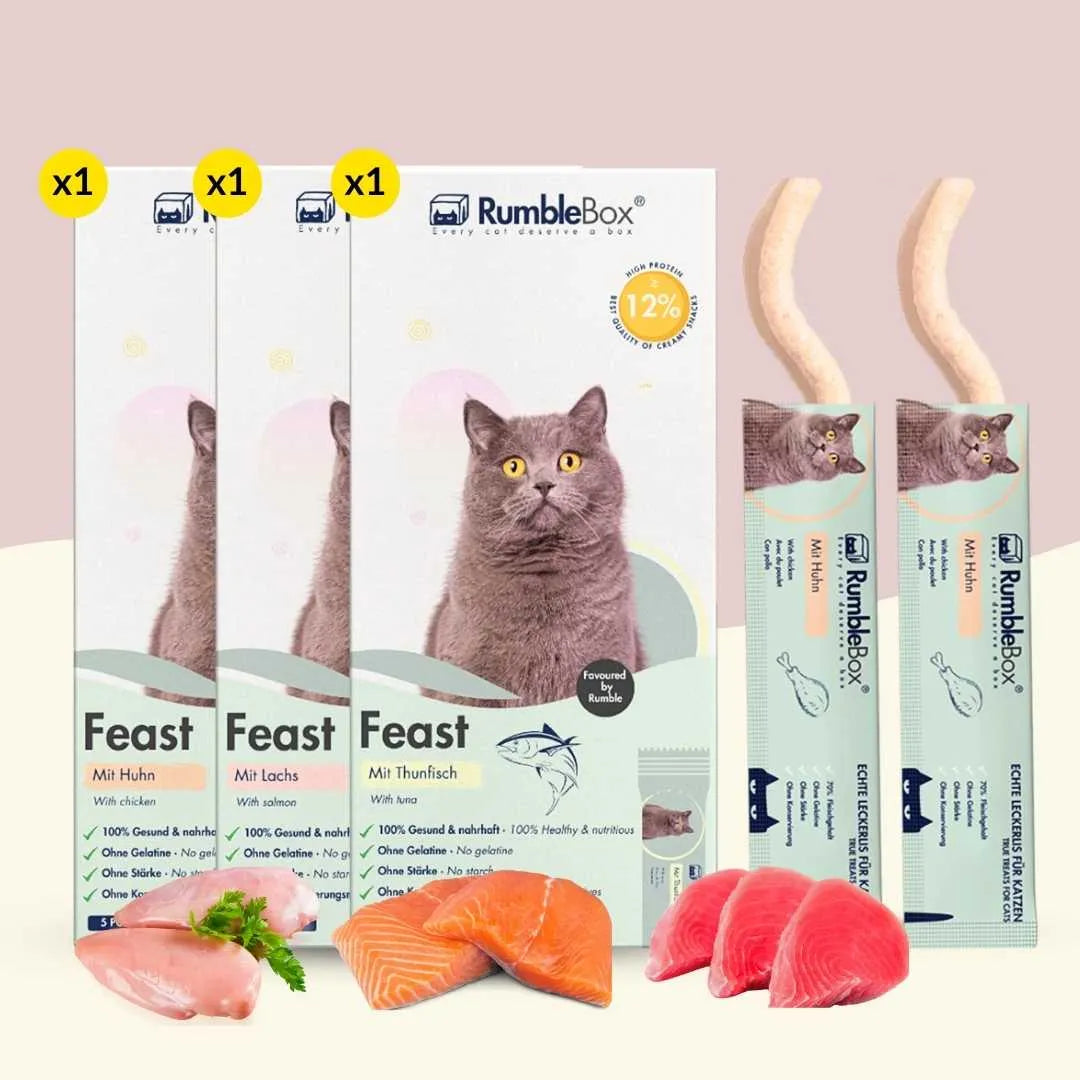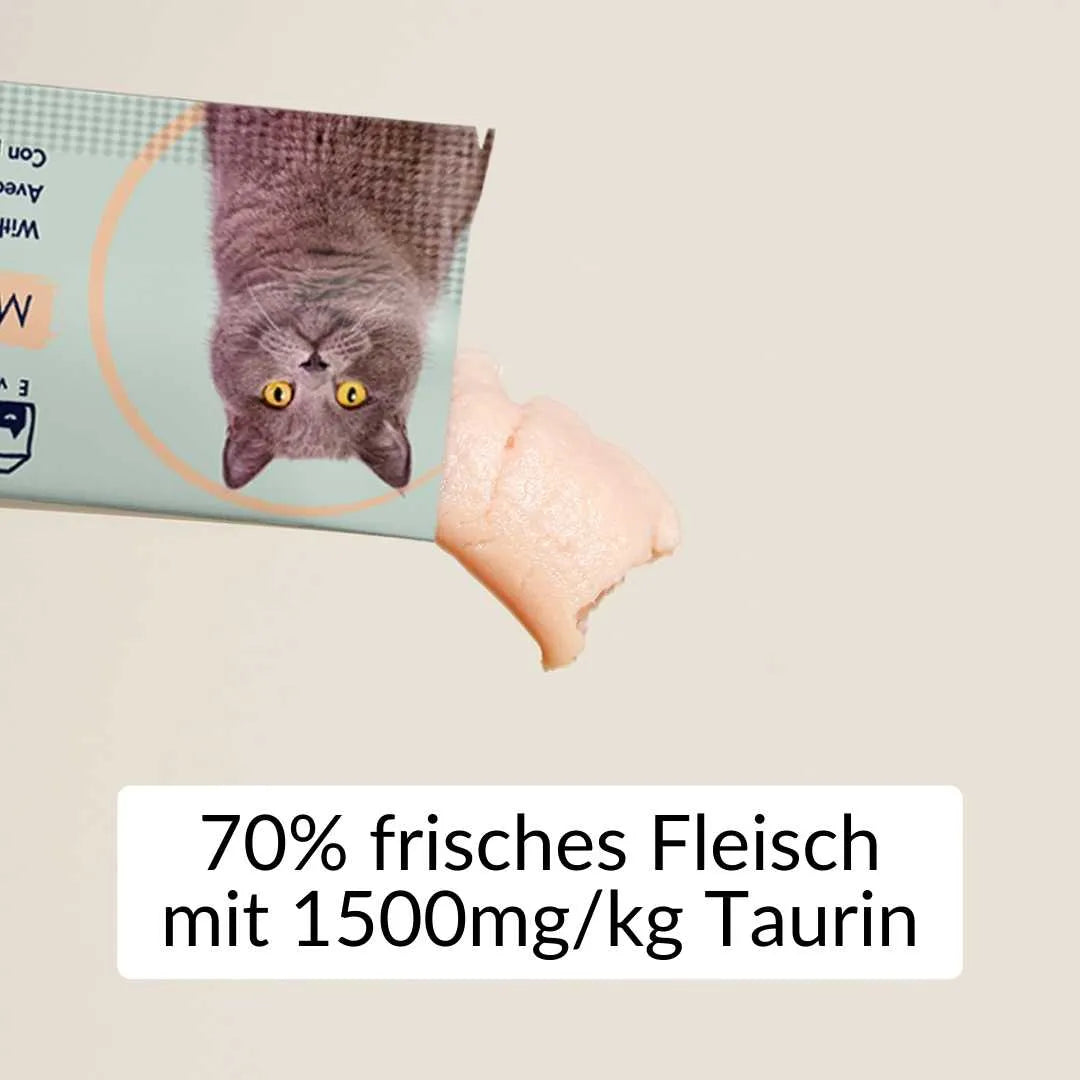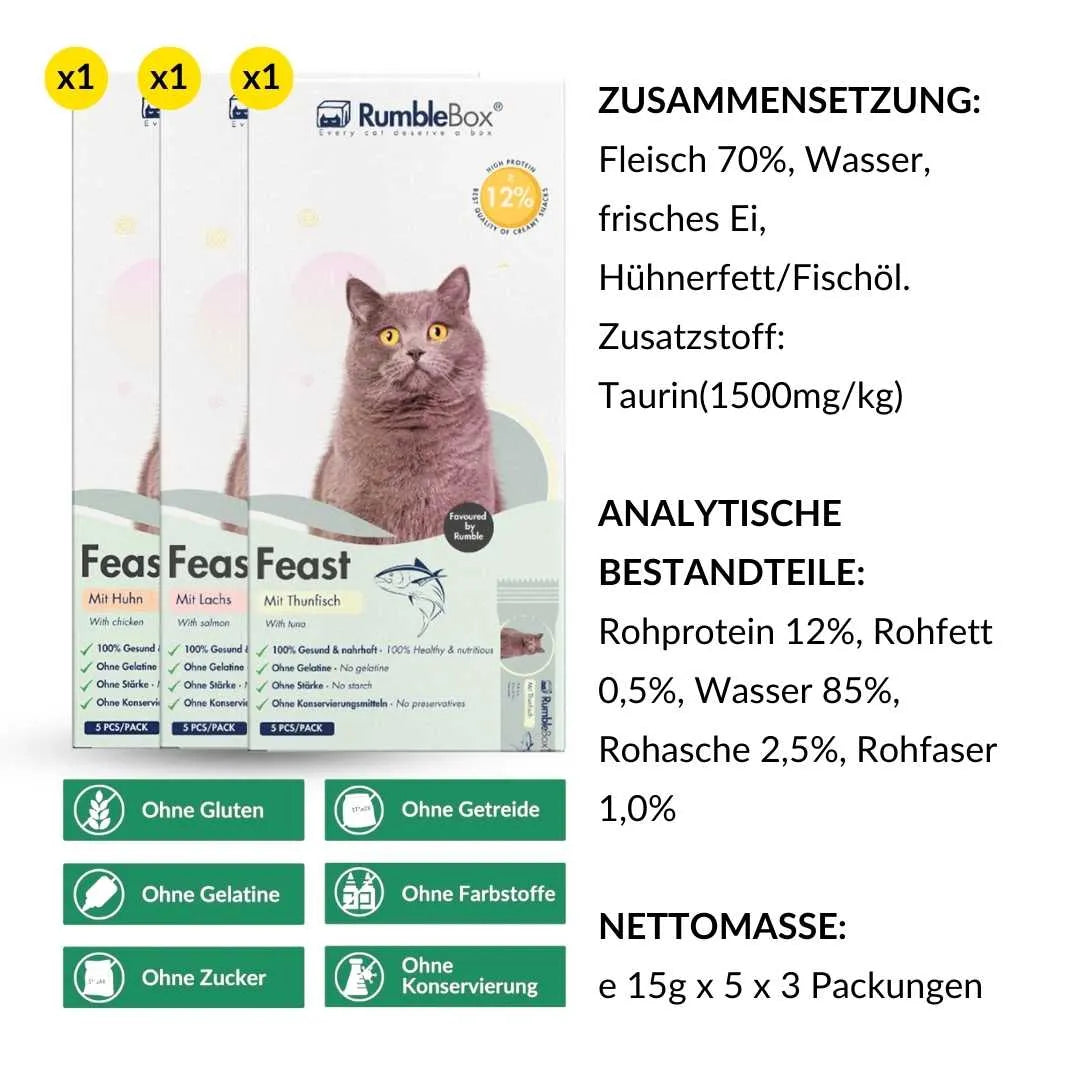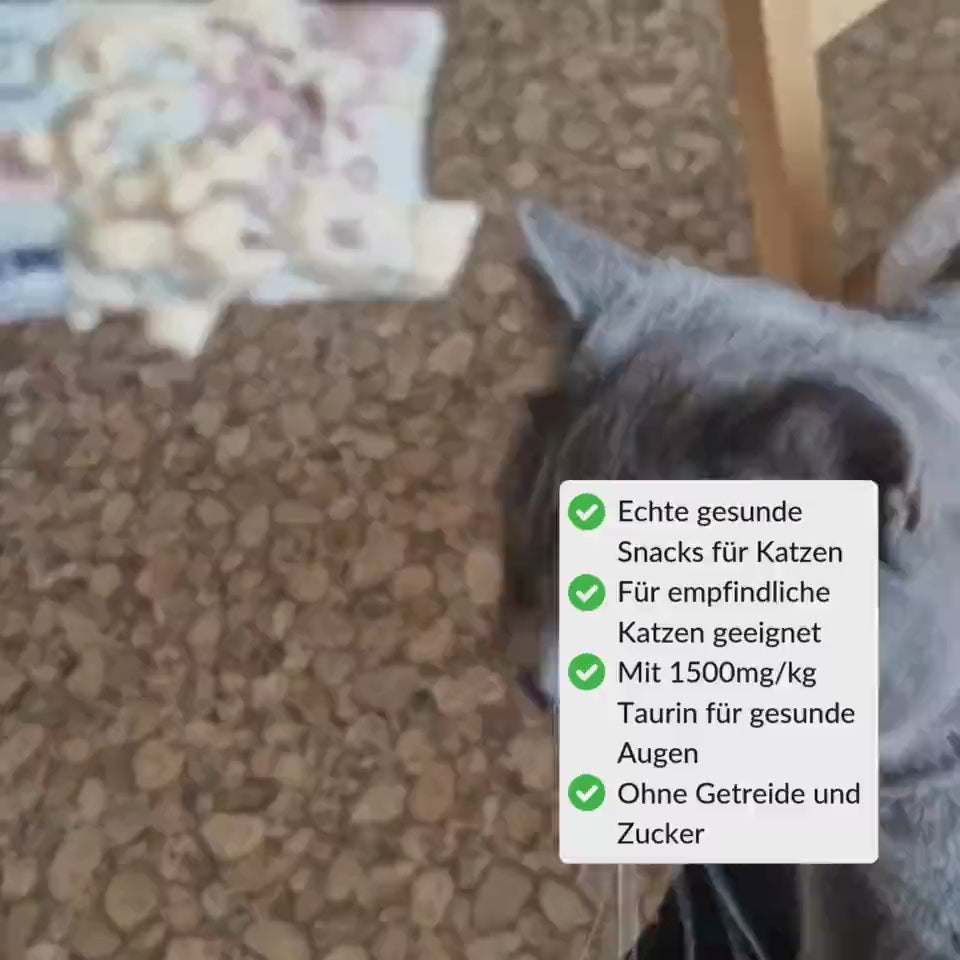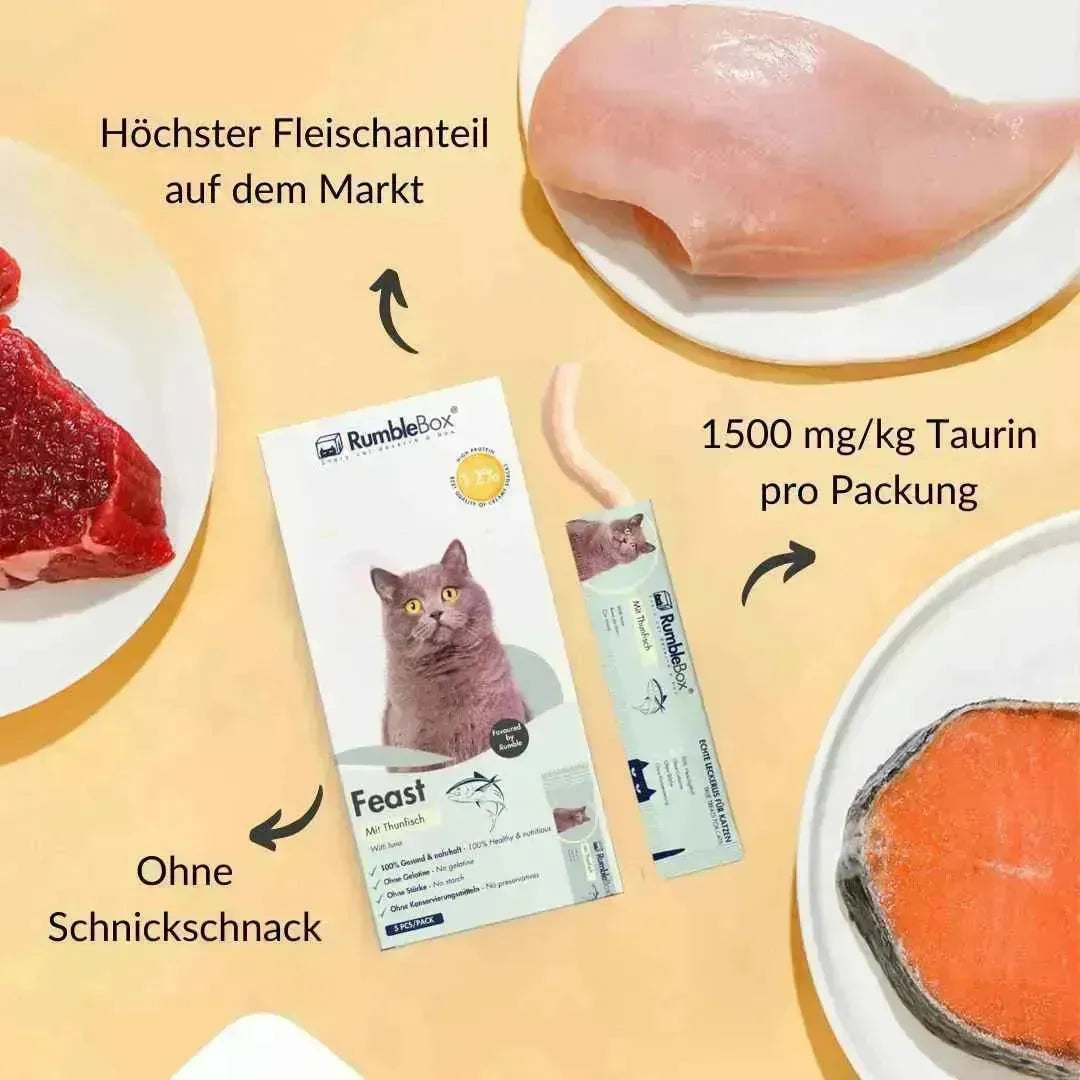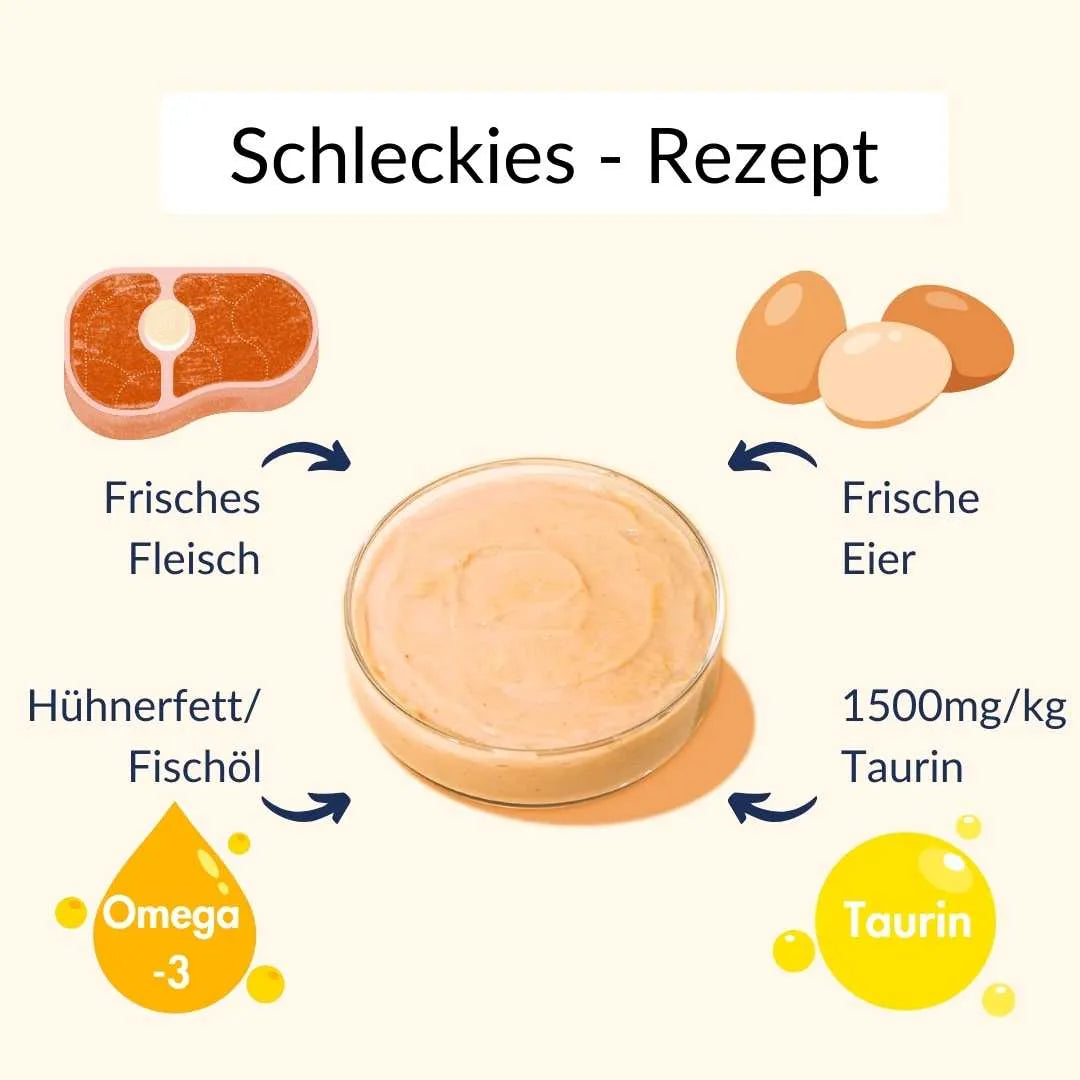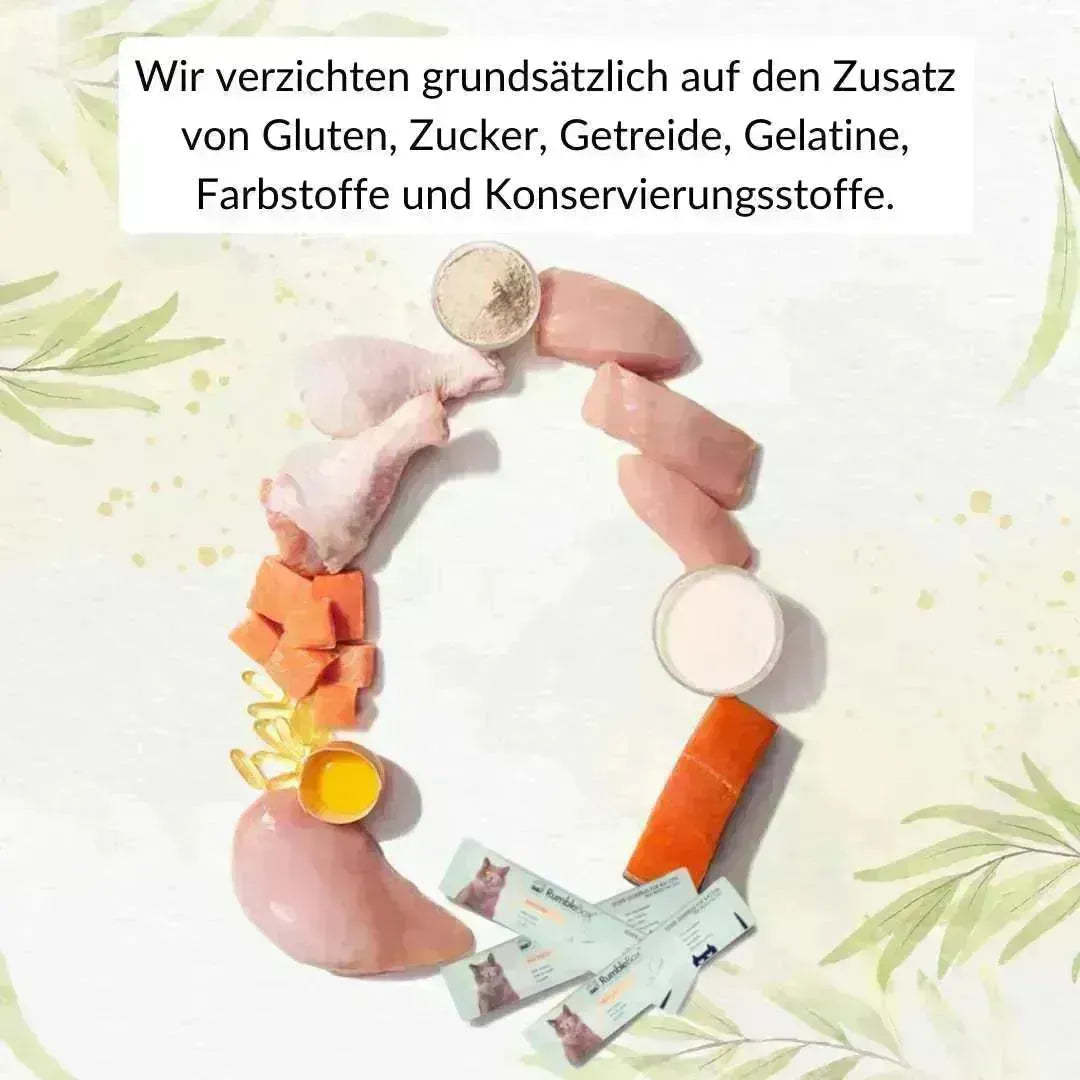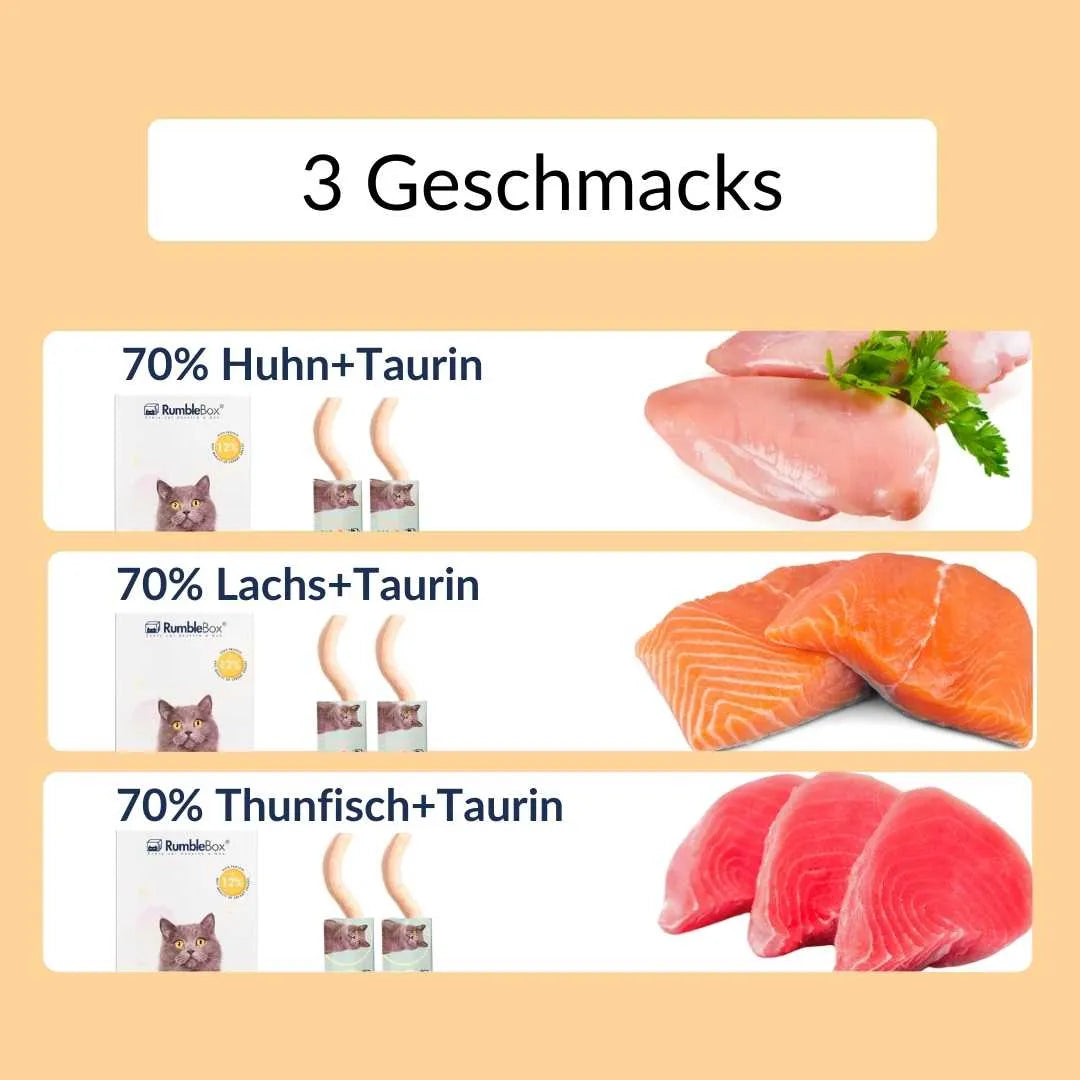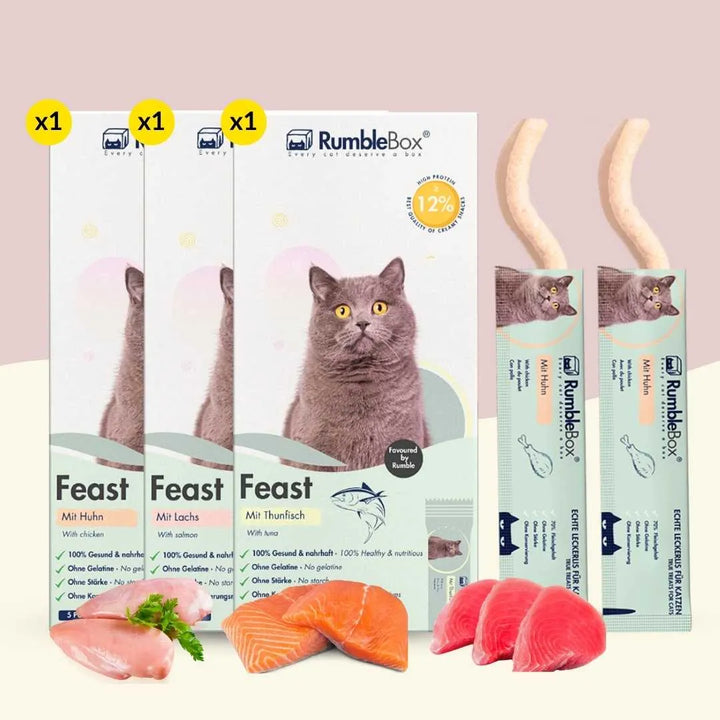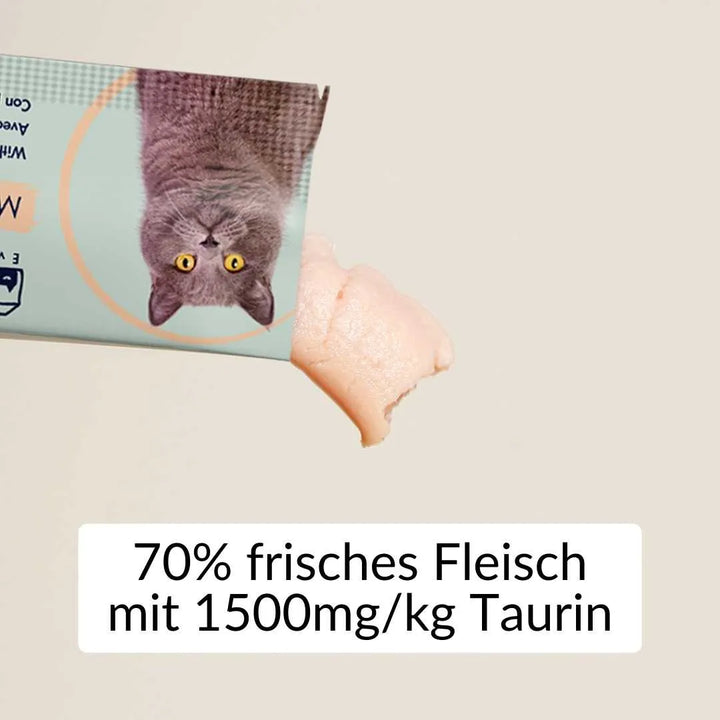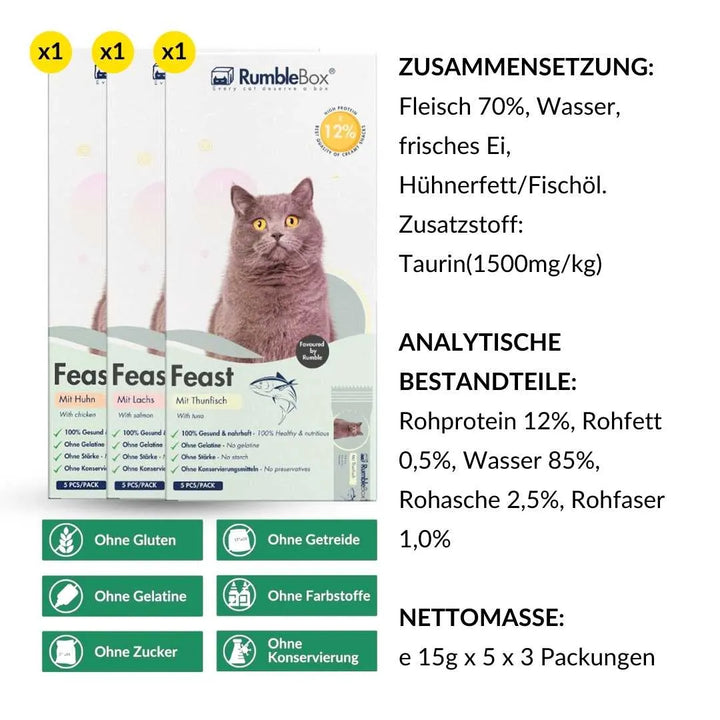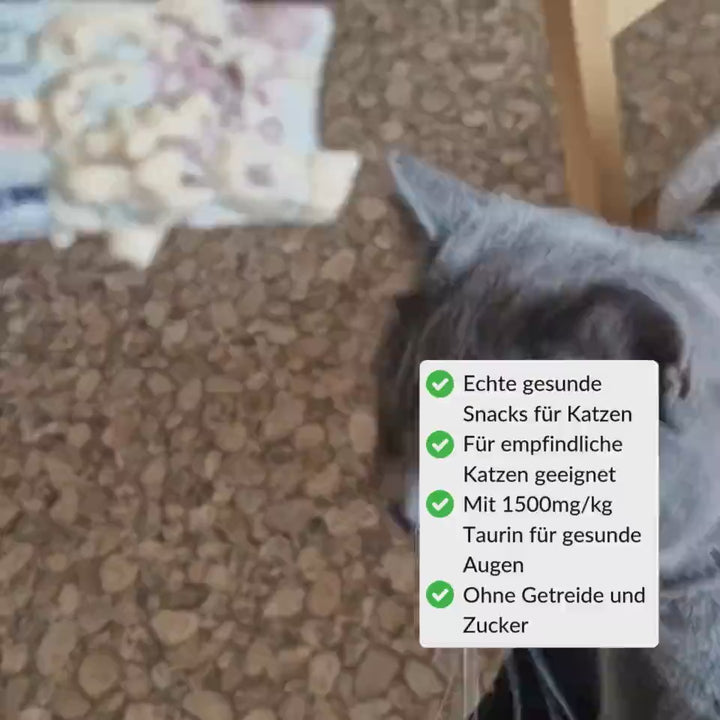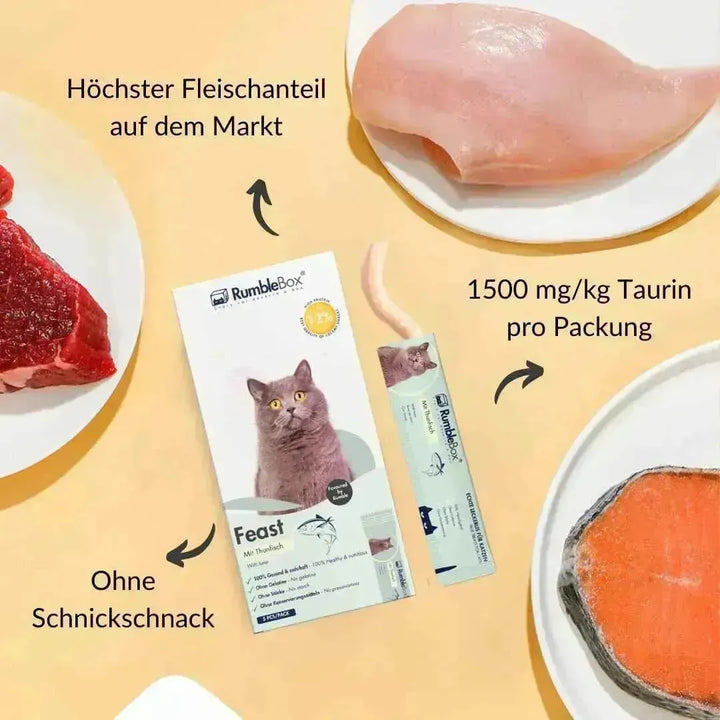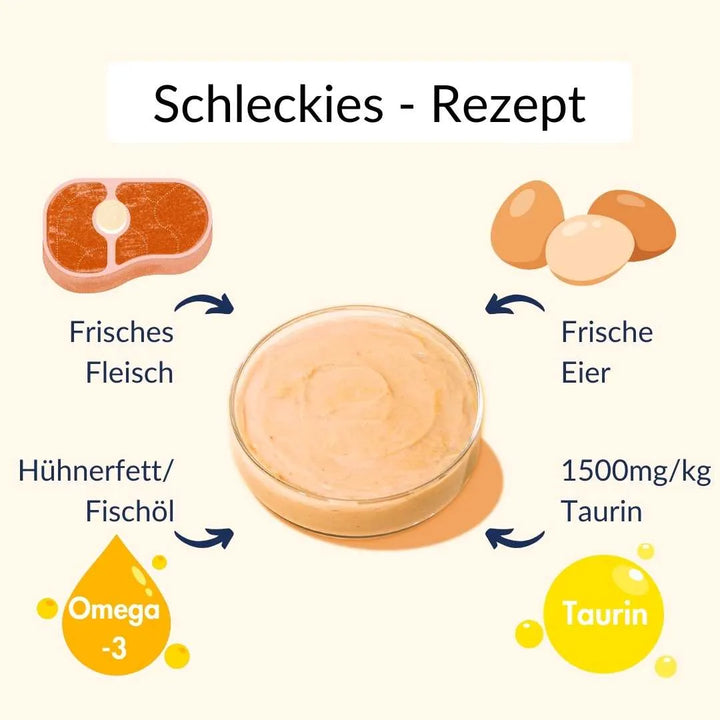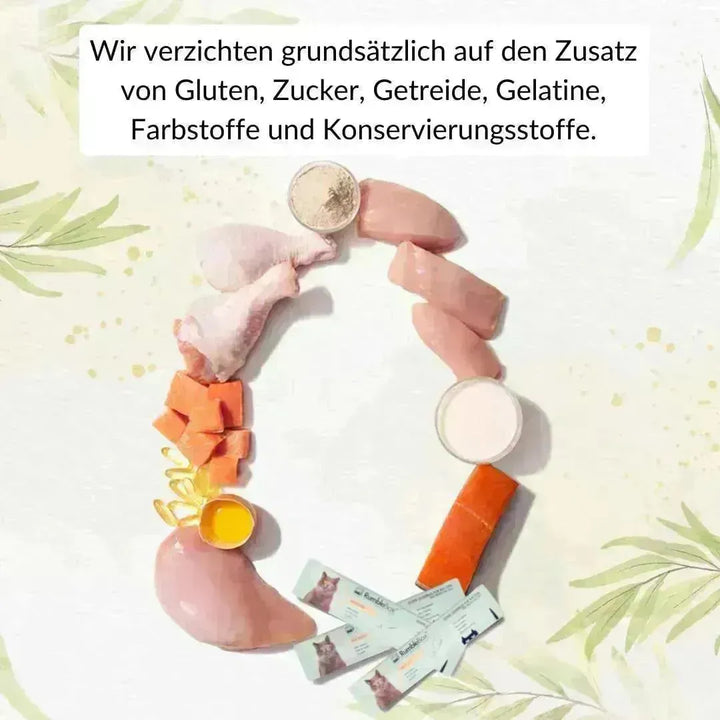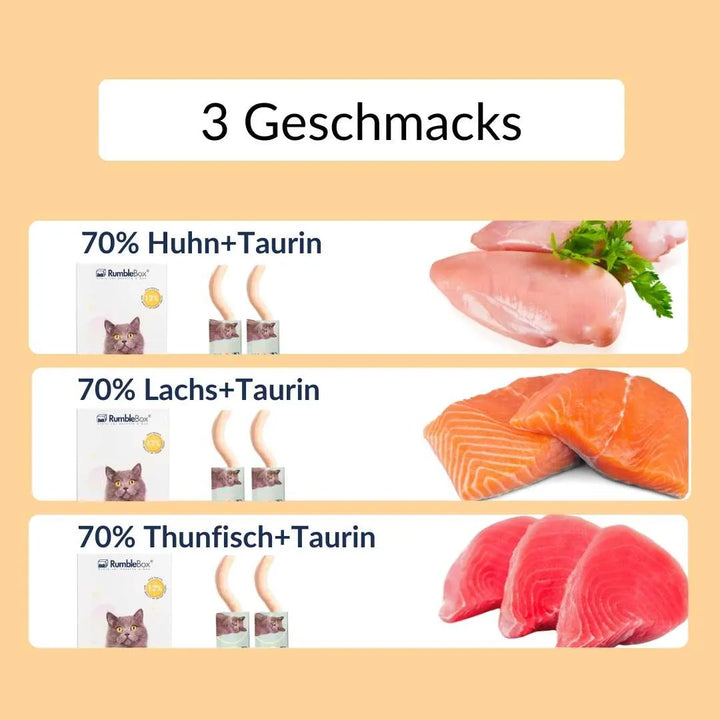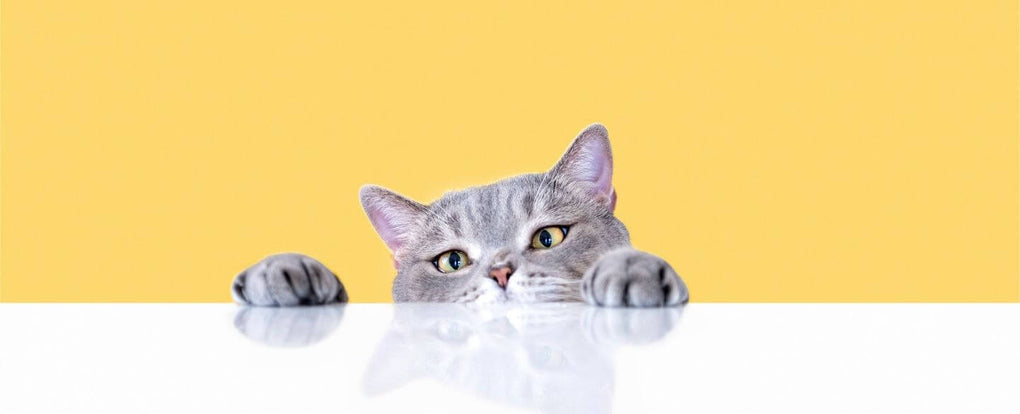Cat's teeth: structure, dental formula and dental care
Table of contents
What does the cat's teeth look like?
At around 5-6 months, your cat will have developed a full set of 30 permanent teeth. The cat's dental formula shows you exactly how the teeth are arranged in the upper and lower jaw. Look at the cat's teeth picture below to understand the arrangement and function of the teeth.

The cat's teeth are divided into four types of teeth:
incisors
Number:
- A total of 12 (6 in the upper jaw, 6 in the lower jaw).
Features:
- Small, sit right at the front of the mouth.
- Behind the incisors lies the entrance to the Jakobson organ, which detects pheromones.
Function:
- Biting off small pieces.
- Assist in grooming by removing dirt or parasites.

canines (canini)
Number:
- A total of 4 (2 in the upper jaw, 2 in the lower jaw).
Features:
- Long, pointed and strong.
- Have small grooves on the surface that drain the blood of prey to keep the teeth clean.
Function:
- Grasping, piercing and holding the prey.
- Killing prey by biting into the neck to sever the spine.
- Serve for defense.

Front molars (premolars):
Number:
- A total of 10 teeth (6 in the upper jaw, 4 in the lower jaw).
Features:
- The teeth are pointed and sharp.
- The upper and lower jaws are slightly offset, which allows for precise chopping of food.
Function:
- Mainly used for tearing and chopping pieces of meat.
- Efficient in processing solid food such as dry food or small pieces of bone.

Back teeth (molars):
Number:
- A total of 4 teeth (2 in the upper jaw, 2 in the lower jaw).
Function:
- The back molars play a supporting role in further grinding the food, especially harder or larger pieces of meat.
- They help cats swallow food more efficiently by making the pieces smaller.
❗ Special feature:
The upper rear molar is rarely actively used because it no longer has an evolutionarily significant function.
- This is because cats, as pure carnivores (obligate carnivores), do not need to chew plants or fiber-rich foods.
-
Instead, they tear off pieces of meat with their front molars (premolars) and canines (canines) and swallow larger chunks directly.
The molars are therefore less developed than in herbivores, which require molars.
The cat's dental formula is:
- Upper jaw: 3I 1C 3P 1M
- Lower jaw: 3I 1C 2P 1M
The cat's dental formula shows how many teeth it has on one side of its upper and lower jaw. Since the teeth are arranged symmetrically, you add both sides together to get a total of 30 teeth.
Teething in cats: How does the cat's teeth change?

Kittens are born toothless. The first milk teeth break through between the second and fifth week. A kitten has a total of 26 milk teeth .
The change of teeth begins around the third month of life. The milk teeth fall out and are replaced by the cat's permanent teeth. This process is usually completed by the sixth month.
During the change of teeth you may observe that your cat:
- chews more on objects to soothe the gums,
- sometimes has bad breath,
- may be a little more sensitive when eating.

It is important that all baby teeth fall out completely to keep a cat's teeth healthy. If teeth get stuck, it could lead to dental problems.
The Functions of the Cat's Teeth
The cat’s teeth fulfill many important functions:
- Hunting and killing: The canines grab prey and kill it with a precise bite.
- Eating: The molars grind food so that it can be swallowed more easily. However, cats do not chew thoroughly like humans do.
- Grooming: Incisors help the cat to remove dirt or parasites from its fur.
- Defense: The cat's teeth are also a weapon with which it can defend itself against attackers.

Common problems with cats' teeth
Without proper care, a cat’s teeth can suffer from various problems:
- Tartar: This is hard plaque that forms from food residue and saliva. Tartar can promote gum inflammation.
- Gingivitis: An inflammation of the gums that is often red and painful.
- FORL (Feline Odontoclastic Resorptive Lesions): A painful disease in which tooth substance degrades.
- Periodontitis: An inflammation of the periodontal ligament that occurs when gingivitis is left untreated and often leads to tooth loss.
Signs of dental problems:
- bad breath
- Increased salivation
- Difficulty chewing or eating
If you notice such symptoms, you should have your cat's teeth examined by a veterinarian.
How to properly care for your cat's teeth
Regular care is important to keep your cat's teeth healthy. Here are a few tips:
- Check teeth: Check your cat's mouth regularly. Is there tartar or red gums?
- Brushing teeth: You can prevent dental problems with special cat toothbrushes and pastes. Start slowly so your cat gets used to it.
- Dental care snacks: These treats clean the teeth while chewing and make care easy.
Thank you for reading this far – it really means a lot to us! We hope you found something useful and maybe your cat is already looking forward to a little something extra. See you soon and lots of purrs!
By the way
Many cat owners pay close attention to the ingredients in their cat's main food , but often forget about treats .
Snacks often contain sugar, grains and artificial additives that can be harmful to health in the long run.
Anyone who truly wants to feed their cat a completely healthy diet should also rely on natural ingredients here:
Hypoallergenic treats without additives – naturally from RumbleBox. Perfect as a reward, during training, or simply as a snack.
Over 2,500 cats have already switched to healthy snacks!
💚


